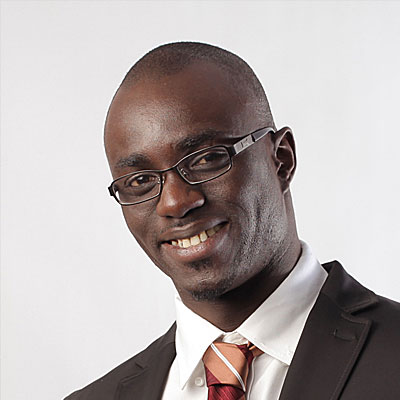Role Of Mary In The Mission Of The Church
 May 20, 2019
May 20, 2019
There was this traditional entertainer (a musician) in my place, now late, who said “There is no mistake about motherhood; a child can say ‘this man is not my father’; but no child can say ‘this woman is not my mother’. If a woman who carried you in her womb for nine months is not your mother, who else is your mother?” he asked rhetorically. By this statement, which he later composed into song, he stressed the significant and irreplaceable role performed by mothers. Consequently, he advised children to give utmost respect and honour to their mothers.
Indeed, the Holy Scripture tells us, “Honour your father and your mother so that you may live long in the land that I am going to show you” (Ex. 20:12). If we must give honour to our earthly or biological mother, then, much greater honour we must give to the Blessed Virgin Mary, not only because she is our “Spiritual Mother” who contributed significantly and indispensably to our salvation, but because God Himself had already honoured her even before the foundation of the world. Thus, whenever the Church honours the Blessed Virgin Mary, who is the first member of the Church and the first disciple of Jesus Christ, the Church is merely following the example of God Himself. That is why, in an attempt to honour Mary and give her a pride of place in the Church, a position which she truly deserves, the Church before, during and after the Second Vatican Council, has serious deliberations on the significance of Mary to the Church.
At this juncture, we recall the influence of the several “movements,” which in several ways and from various points of view raised keen interest in the person of the Virgin and considerably influenced the composition of the Constitution Lumen Gentium: the Biblical Movement, which underlined the primary importance of Sacred Scriptures for a presentation of the role of the Mother of the Lord; the Patristic Movement, which put Mariology in contact with the thoughts of the Fathers of the Church so that its roots in Tradition could be more deeply appreciated; the Ecclesiological Movement, which contributed abundantly to the reconsideration and deepening appreciation of the relationship between Mary and the Church; the Missionary Movement, which progressively discovered the value of Mary of Nazareth, the first to be evangelized (see Lk. 1:26-38) and the first to the spreading of the Good News; the Liturgical Movement, which initiated a rich and rigorous study of the various liturgies and was able to document the way the rites of the Church testified to a heartfelt veneration towards Mary, the “ever-Virgin, Mother of Jesus Christ, our Lord and God” (Missale Romanum, Prex Eucharistica I, Communicantes); the Ecumenical Movement, which called for a more exact understanding of the person of the Virgin in the sources of Revelation, identifying more exactly the theological basis of Marian Piety. Our concern in this lecture is the relationship between the Blessed Virgin Mary and the Church, particularly as regards her contribution to the mission of the Church. Before we do this, it is proper to understand who Mary is.
Who is Mary? The litany of the Blessed Virgin Mary gives a long list of how Mary could be described. It is actually a compendium of the titles of Mary. Generally speaking, Mary is the Mother of Jesus Christ, the Second Person of the Blessed Trinity. She is also the Mother of God. She is the Spiritual Mother of the Church. She is the Mother of all Christian faithful. Other descriptions of Mary include Queen of Heaven (see Rev. 12:1); Queen of Apostles; Queen of Angels; Queen of Virgins; Queen of all the Saints; Queen of Nigeria; Queen of Peace; Our Advocate; Mary is the Mediatrix of all Graces; our Maternal Mediatrix; Mary is our Intercessor; our Helper; Mary is the “New Eve” because she is the “New Mother of all the living”. Mary is the first disciple of Jesus Christ. Mary is the first Tabernacle of Jesus Christ, because her womb was the first dwelling place of God the Son. Mary is the Mother of the Suffering Servant of God; She is our Lady of sorrows. Indeed, the list is inexhaustible! This is because our Mother Mary means different things to different people. In this piece, we shall provide a detailed explanation of only one title of Mary, namely, “Mother of the Church”.
Mother of the Church: Spiritually, Mary is Mother of all Christ’s faithful. This is related to the doctrine of the Mystical Body of Jesus preached by St. Paul. According to him, “Christ is the Head of the Body, and the Church is the Body of Christ” (Eph. 4:15; Col. 1:18). Mary, then, in conceiving Jesus, the Head of the Mystical Body, also conceived the faithful since we all are members of that same Body. In giving birth to Jesus the Head, Mary also gave birth to the Body, the Church, because the Head cannot be separated from the Body. Mary, in giving physical or biological birth to Jesus, made it possible for His members to receive spiritual life through Jesus. Hence, Mary is our true “Spiritual Mother”. It was because of this and other significant roles which Mary played in our salvation that Pope Paul VI proclaimed Mary as “Mother of the Church”.
Meaning of Church: The word “Church” does not primarily refer to a structure or an edifice. It, first and foremost, refers to “an assembly of God’s people”. In other words, “the Church refers to the People of God”. The Hebrew word Kahal, as well as the Greek word ekklesia, has this same denotation of the Church being an assembly of God’s people. Thus, a building is secondarily referred to as “Church” because of the presence of the People of God in that building. Without the presence of this People of God, members of God’s family, who worship in that building regularly, such a building will not be referred to as Church.
What is the Mission of the Church? Simply put, the mission of the Church is that of evangelization for the salvation of souls. The simplest meaning of evangelization is “bringing Christ to others and others to Christ”. The last canon of the 1983 Code of Canon Law says, Suprema lex, salus animarum, that is, “the supreme law is salvation of souls”. This means that there is no other reason why the Church was established by Jesus Christ on the rock of Peter besides salvation of souls. He said, “…you are Peter and on this rock I will build my Church; and never will the powers of death overcome it. I will give you the keys of the kingdom of heaven; whatever you bind on earth shall be bound in heaven, and what you unbind on earth shall be unbound in heaven” (Matthew 16:19-20). Canon 781 says, for instance, that “Because the whole Church is of its nature missionary and the work of evangelization is to be considered a fundamental duty of the People of God, all Christ’s faithful must be conscious of the responsibility to play their part in missionary activity”. In order that the work of evangelization be carried out, especially with the urgency it requires, there must be people who actively engage in this missionary work. In this connection, St. Paul explains that people cannot hear of Christ, except a person is sent to preach to them (Rom. 10:14-15).
Mary’s Fiat: A Significant Foundational Role that Changed Human History: In explaining and describing who Mary is, we discover that some of the roles or functions which Mary performs towards the mission of the Church are inherent in her titles. For instance, in explaining the title of Mary as Advocate, we discover that she intercedes for the Church. Thus, we may simply summarize that Our Lady performs her roles in the mission of the Church mainly as Mother of the Church, among other roles.
At this juncture, permit me to single out one very important role, if you like, a key role, performed by Mary with respect to our salvation. It is the role of obedience to God’s will, which is theologically referred to as her fiat: “Behold the handmaid of the Lord, be it done to me according to thy word” (Lk. 1:38). This particular fiat forms the foundation of all other functions or roles which the Blessed Virgin Mary carried out in her lifetime. This role is not just for the benefit of the Church alone, but for the benefit of the whole human race. Indeed, Mary’s fiat has changed the whole of human history. All other roles are subordinate to this particular one.
Power of Mary’s Fiat: With Mary’s utterance of her fiat, the greatest miracle, the miracle of miracles, the mystery of the Incarnation of the Creator to the most perfect of all his creatures, became an accomplished fact. According to St. Thomas Villanova, “With a fiat (Let there be…) God created light, heaven and earth, but at Mary’s fiat God became a man like ourselves!” St. Bernardine of Siena says, “To become the Mother of God is the highest state to which God could possibly raise a mere creature”. Catholic Theology holds that the Blessed Virgin Mary is next in rank after the Blessed Trinity. In other words, she occupies the Fourth Position in the whole of creation, indeed, in both heaven and earth. Mary occupies in the Church “the highest place and closest to us after Christ.” Her dignity far surpasses the dignities of all the angels and saints put together. That is perhaps why St. Albert the Great remarks that, “Mary could not be more closely united with God, without becoming God!” St. Peter Damian advises the human race, saying “Let every creature keep silence and tremble, hardly daring to consider the immensity of so great a dignity; God dwells in the Blessed Virgin and has with her the identity of one nature!”
The Blessed Virgin Mary told St. Gertrude in a vision about how she would help those who recognize her dignity by honouring her, especially through the recitation of the Holy Rosary, the Greatest Marian Prayer. Our Lady said, “I will truly prove myself a mother to all who devoutly recall to me the joy which I felt in uttering the words: ‘Behold the handmaid of the Lord’, and I will come to their aid without fail!”.
The Second Vatican Council deliberated elaborately on the relationship between Mary and the Church, especially as regards salvation history. Precisely the eighth Chapter of the document Lumen Gentium highlights the doctrinal synthesis and formulation of doctrine about the Blessed Virgin Mary within the context of the mystery of Christ and of the Church. By so doing, the Council, “stressed that the Mother of the Lord is not a peripheral figure in our faith and in the panorama of theology; rather, she, through her intimate participation in the history of salvation, in a certain way unites and mirrors within herself the central truths of the faith” (Lumen Gentium, no. 65).
For Christ, and therefore also for the Church, God willed and predestined the Virgin Mary from all eternity. Mary of Nazareth is, “hailed as a pre-eminent and altogether singular member of the Church” (Lumen Gentium, no. 53) because of the gifts of grace which adorn her and because of the place she occupies in the Mystical Body. She is Mother of the Church, since she is Mother of him who, from the first moment of the Incarnation in her virginal womb, unites himself as Head of his Mystical Body which is the Church.
After the Second Vatican Council, the encyclical Redemptoris Mater (Mother of the Redeemer) issued by Pope St. John Paul II, confirms the Christological and Ecclesiological approach to Mariology that clearly revealed a wide range of its contents. The entire Redemptoris Mater can be considered the encyclical of the “maternal and active presence” of Mary in the life of the Church (Redemptoris Mater, 1, 25), among others. All these documents and many more not mentioned here underscore the importance of our Lady in the Church. To say the least, she is indispensable! Let us continue to accord her the highest honour that is due to her as our Spiritual Mother.
BY REV. FR. MARK AJIGA
 Guy Wilkins
Guy Wilkins Larry Reed
Larry Reed Roxanne Holland
Roxanne Holland Bridget Kennedy
Bridget Kennedy Sally Mendoza
Sally Mendoza